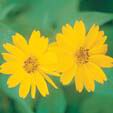 |
| Author: V.B. |
Ecuador Nature
Just outside of Ecuador’s principle cities, the traveler finds
encounter extensive areas protected by the State as well as by private
organizations such as universities and ecological and scientific
groups. The diversity of the four regions has given rise to the
evolution of thousands of species of flora and fauna, all of which
now thrive in a variety of diverse ecosystems.
Ecuador boasts approximately 1,640 species of birds, 500 of which
are found in the Mindo-Nambillo Protected Forest to the northwest
of Quito. In addition, Ecuador is home to 4,500 species of butterflies,
345 species of reptiles, 358 species of amphibians, and 258 species
of mammals, among others With so much wildlife in such a small space,
it’s no surprise that Ecuador is one of the planet’s top
17 nations with respect to biodiversity.
In all corners of Ecuador, national parks such as Cotopaxi, Sangay,
and Machalilla abound. Mountains, snowcapped peaks, lakes, lagoons,
and beaches are all found within 24 areas protected by the State,
including dozens of vast green forest belts, marked here and there
with terracotta patches resulting from the variety of colors present
in the foliage. In order to reach some of the ecological reserves,
national parks, and recreation areas, it is often necessary to hike
long distances, often crossing paramos and rivers. The spectacular
settings of the different zones reveal themselves in an impressive
demonstration of rich flora and fauna. The majority of sites require
the assistance of contracted guides, with the exception of the few
areas where there are marked trails. Visitors should take care not
to alter the ecosystem. It is prohibited to light fires, drop litter,
or to remove plants or animals.
Due to the nation’s diverse microclimates, it’s possible
to try your hand at a variety of adventure sports – from diving
to mountain climbing to rafting to mountain biking – while
in Ecuador.
For more information on nature, national parks, nature reserves,
adventure tourism, rurual toursm, ecotourism, and more, check out
our regional nature guides:
TOP
TOP
|

